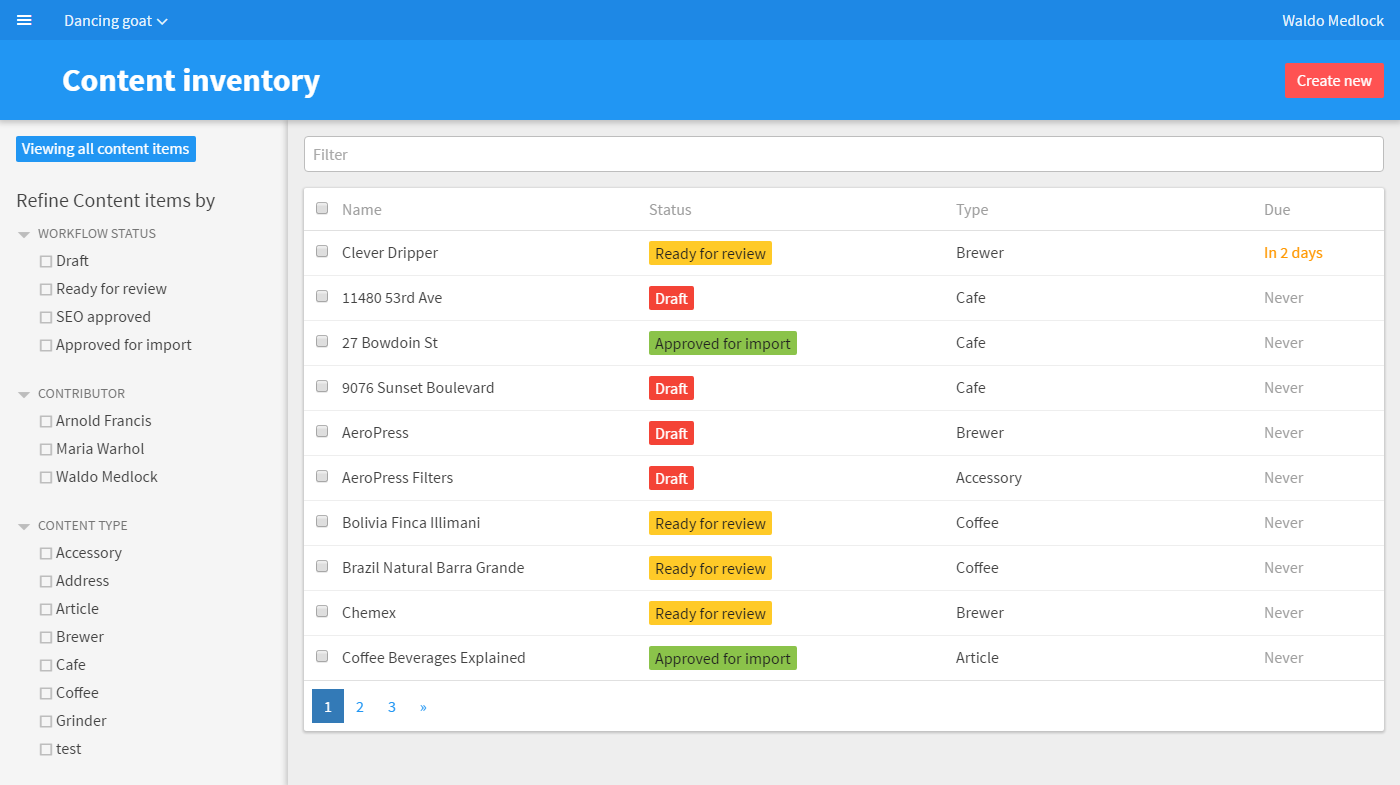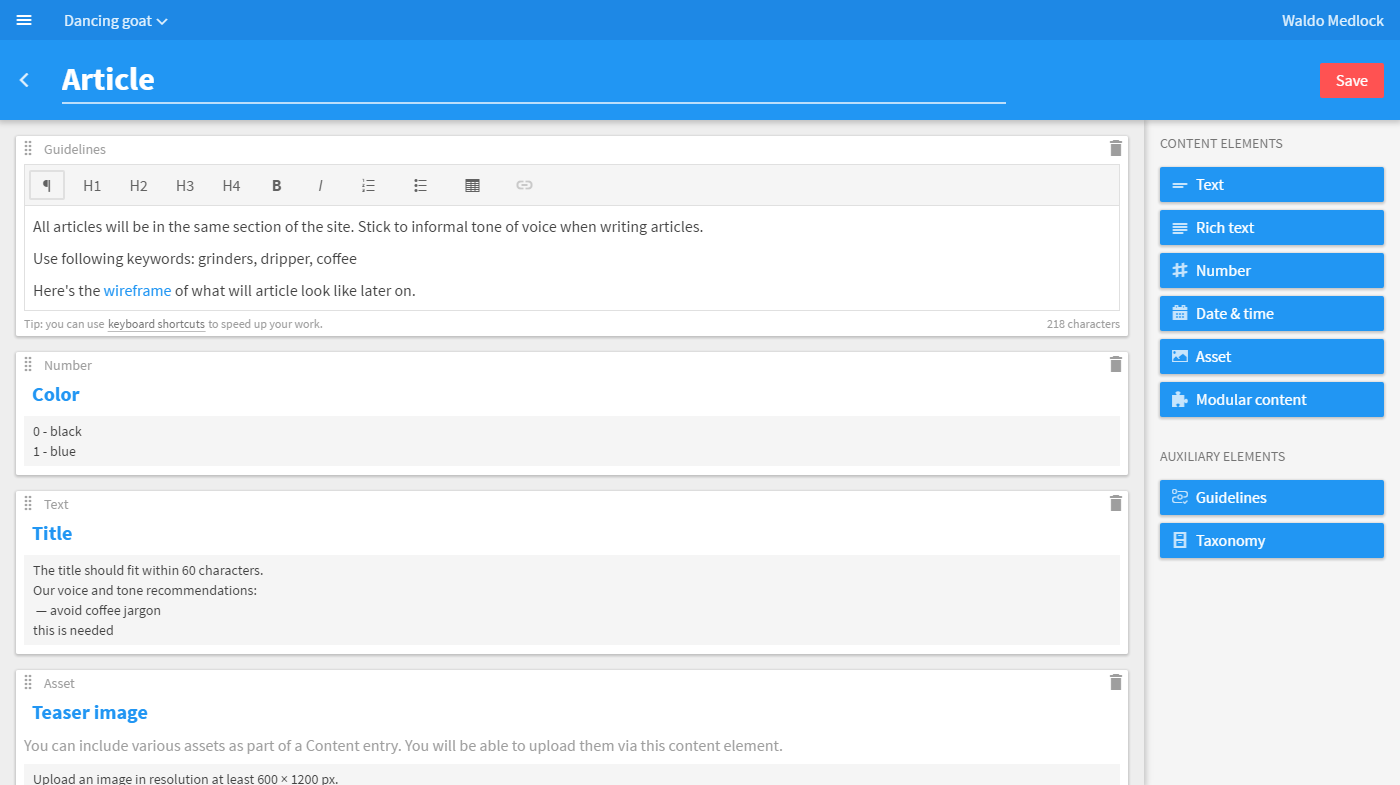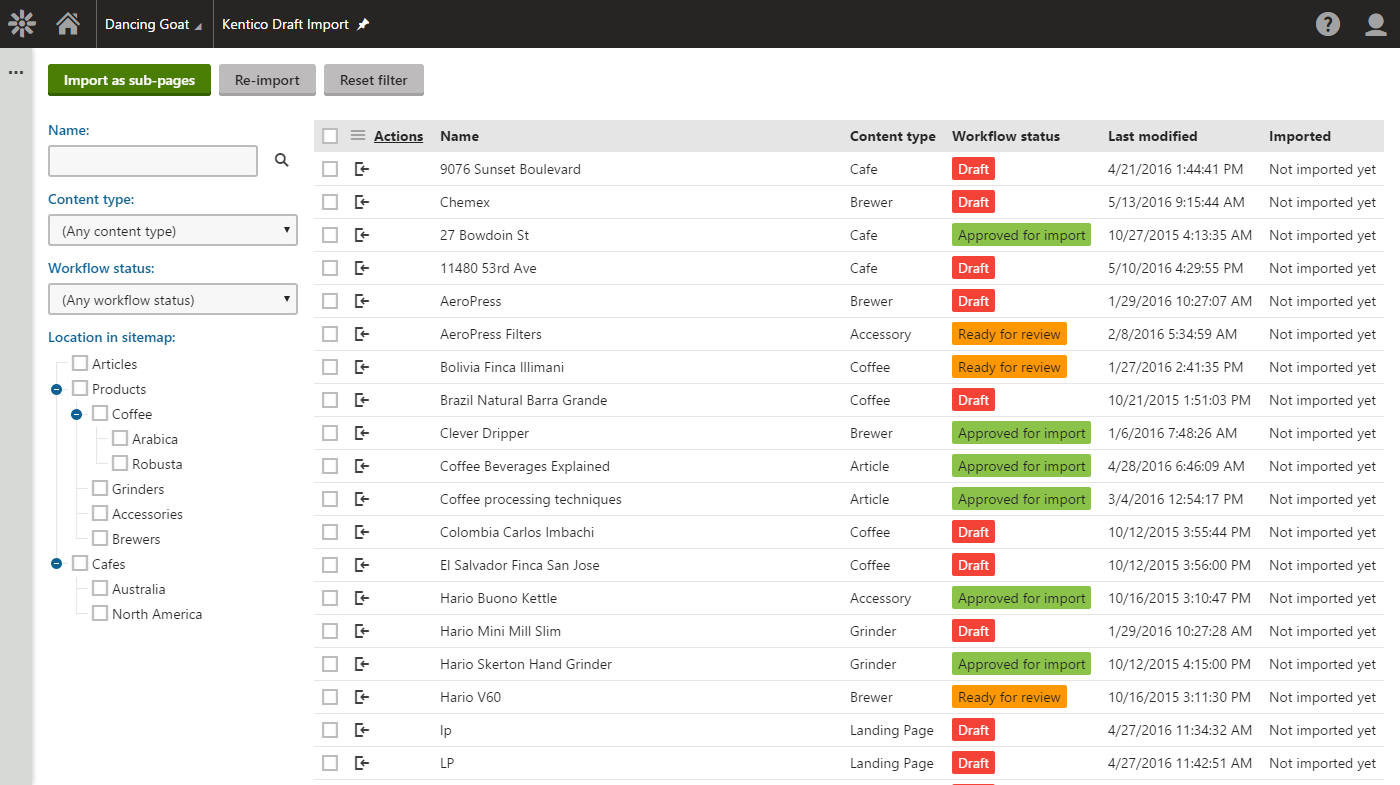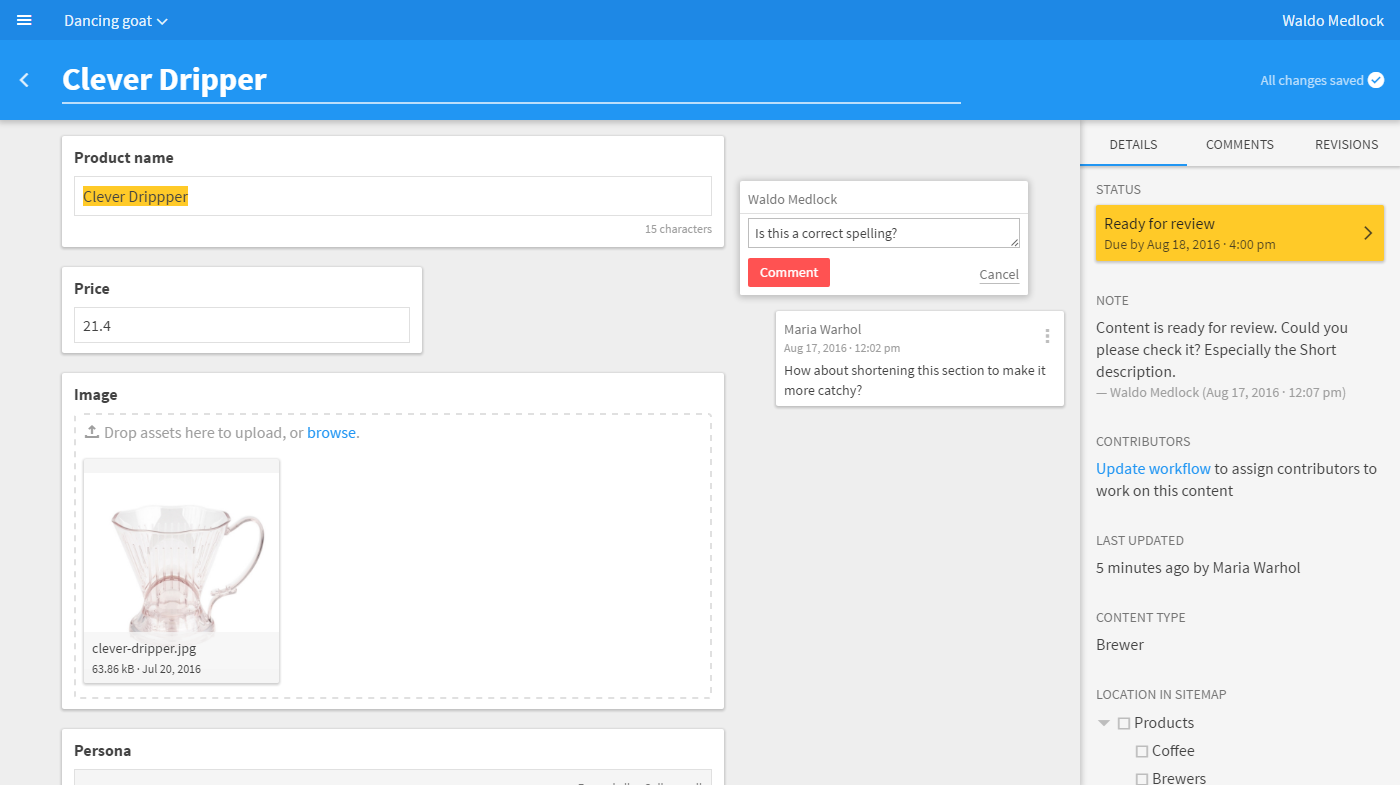How Kentico Draft Benefits Developers
Every digital agency faces challenges when developing websites for their clients. The ultimate goal is to bring in the project on time, which requires collaboration between marketing, content, and development teams on both sides of the table. Kentico Draft brings everyone together to collect content early in the web development process, helping avoid delays that postpone the project. In this article, I’ll take a look at how Kentico Draft benefits developers by helping them produce websites faster, minimize delays, and limit dependencies on content contributors.
Throughout the development process, producing content as early as possible can significantly speed up development and minimize project delays. To help companies with this challenge, Kentico released Kentico Draft to enable agencies to create content before website development even starts. It’s a cloud-based service that allows agencies and their clients to collaborate on content in a single location and make that content available to developers much faster than traditional methods.

Kentico Draft is an easy sell to account managers and content strategists. They can use a web-based service to delegate the content requirements and monitor the progress of the entire project. Copywriters and subject matter experts can enter all their content while the development phase is in progress. Marketing managers can approve content that is correct and keep everyone up to date on what’s still in progress. All of these capabilities save precious time at the end of projects and allow you to make sure the content is correct and ready to go when the site is ready to go live.
So how much does including Kentico Draft in the process improve the life of a developer? A lot! Let me share three great benefits that can greatly simplify your tasks throughout your projects.
1. Access to a mature version of the content
All developers can appreciate getting access to real content as soon as possible. The sooner a developer can see and understand how the real data will look and function within the site, the less there will be a need for modifications later. Often in projects, developers define and architect the content structure to match their site structure at the beginning of the development phase. As editors enter their content, this structure often needs to be adjusted to fit the design, causing changes by developers after they’ve already started building the application.

Draft allows developers to see a mature version of the content sooner, which in turns allows them to address architecture changes sooner. Thanks to Draft, page templates and other content repositories are designed and implemented much more efficiently, and the developer can save a lot of retooling over the life of the project. Because the content is actively being created throughout the project, developers have access to information even before it’s completed, allowing them to leverage it within their development. If a developer needs to test a particular page or functionality, they have instant access to the content without waiting for requests made to the editors.
2. A single source for all content
Another unnecessarily manual job is combining content from multiple sources. Page text may be in Word documents, while images may be on a network share. Combining this data into a logical format is often a tedious and time-intensive endeavor, and it can bring the development phase to a screeching halt. If a project has multiple contributors from many organizations, this issue can make a significant impact on the project timeline as developers have to gather these resources from different locations constantly.

With Kentico Draft, developers can rest easy knowing all the content they will need to import will be in a single location. Because the service supports content, images, and metadata, entire site sections can be prepared ahead of time and then imported into a CMS in a single step, eliminating the need to pull content from many sources. With Draft, developers can stop chasing down content from multiple sources and focus on a single repository for all of the information.
3. Reduce mistakes and improve communication
Every developer has dealt with communication issues during a project. Whether dealing with changes in requirements or personnel, there are plenty of opportunities where critical information needs to be exchanged. With all of these emails and meetings, it’s easy for details to get overlooked. These can cause big problems in projects and blow timelines and budgets out of the water.

With Draft, mistakes are reduced by putting all of the information in a central location. As requirements change, editors can update their content in Draft, making notes about important details using the built-in commenting system. Developers can track the progress of the content and stay up to date on any modifications quickly. By using the Revisions feature, developers can see exactly how the content was modified and take action on any site changes immediately. Through better collaboration, companies can minimize mistakes and miscommunication.
Looking ahead
Companies have a challenging job when architecting and developing applications. Any improvements that eliminate delays and minimize issues can save valuable time and money. Hopefully, this article has shown you how Kentico Draft can bring some massive benefits to the development phase and help you create your applications faster. Good luck!